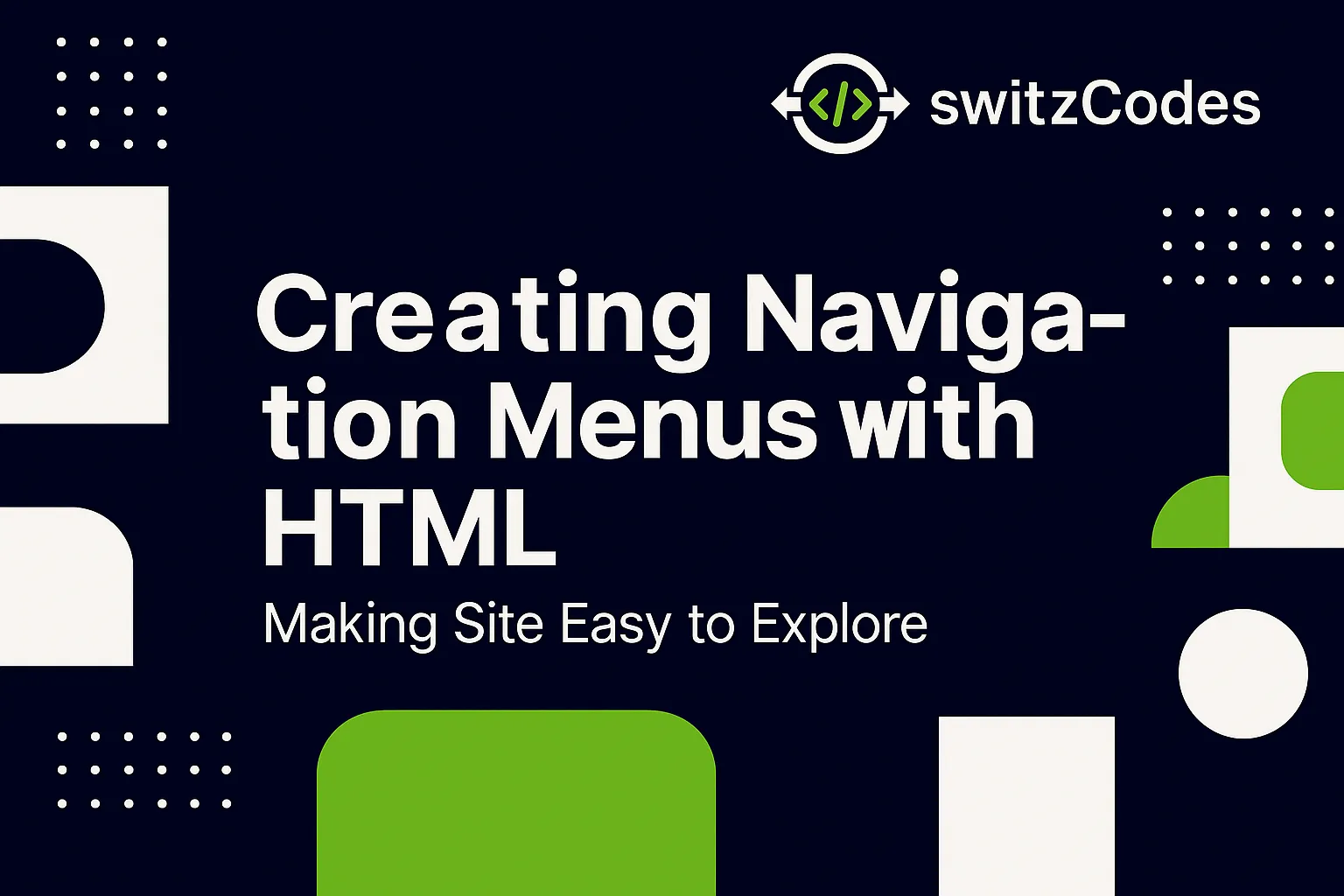
📄 Creating Navigation Menus with HTML - Making Site Easy to Explore
📅 October 10, 2025
✍️ By Evans
Hey! 👋
When I started creating multiple pages on my site, I quickly realized I needed an easy way for visitors (and me 😅) to move between them. That’s when I learned about HTML navigation menus — the <nav> tag and links working together to make your site flow smoothly.
Let me show you what I learned! 🚀
🧱 The <nav> Tag – The Navigation Area
The <nav> tag tells browsers, search engines, and screen readers that this section contains main navigation links.
Here’s a simple example:
<nav>
<a href="index.html">Home</a>
<a href="about.html">About</a>
<a href="blog.html">Blog</a>
<a href="contact.html">Contact</a>
</nav>
That’s the basic idea — just a set of links inside the <nav> tag!
🎨 Adding Some Style
When I first added links like that, they stacked on top of each other.
To make them look like a menu bar, I used a bit of CSS.
<nav style="background-color: #333; padding: 10px;">
<a href="index.html" style="color: white; margin: 10px; text-decoration: none;">Home</a>
<a href="about.html" style="color: white; margin: 10px; text-decoration: none;">About</a>
<a href="blog.html" style="color: white; margin: 10px; text-decoration: none;">Blog</a>
<a href="contact.html" style="color: white; margin: 10px; text-decoration: none;">Contact</a>
</nav>
Now it looks like a real menu — simple, clean, and functional! 😎
🧱 Making It Look Even Better
You can use lists (<ul> and <li>) inside the nav to structure your menu better. That’s what most professional sites do.
Example:
<nav>
<ul>
<li><a href="index.html">Home</a></li>
<li><a href="about.html">About</a></li>
<li><a href="blog.html">Blog</a></li>
<li><a href="contact.html">Contact</a></li>
</ul>
</nav>
With CSS, you can turn that into a horizontal navbar:
nav ul {
list-style-type: none;
background-color: #333;
padding: 0;
margin: 0;
overflow: hidden;
}
nav li {
display: inline;
}
nav a {
color: white;
text-decoration: none;
padding: 14px 16px;
display: inline-block;
}
nav a:hover {
background-color: #555;
}
Result: a smooth, professional-looking navigation bar that reacts when you hover over it ✨
💡 Things I Learned
- Use
- Always make your navigation clear and simple.
- Test your links! A broken link can ruin the whole experience. 😅
🎯 What I Learned
Building navigation menus taught me how structure and style come together in HTML and CSS. It’s satisfying to see a menu bar appear and actually work!
👉 What’s Next?
Next up, I’ll share HTML Best Practices I’m Following as a Beginner — all the small habits I’ve picked up that make my code cleaner and easier to manage. 💡
Catch you in the next one!
— Evans 💻
